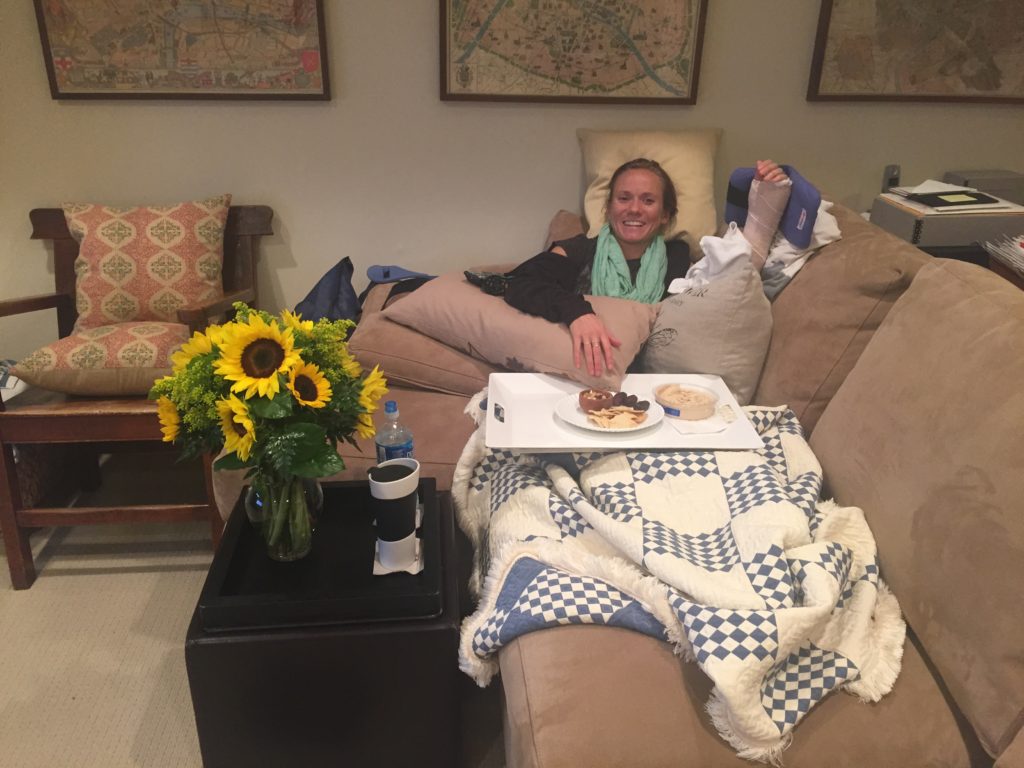With my hands planted at the top of my yoga mat, a genuine 90-degree angle at my wrist and elbow, I marveled at how normal I felt this morning balancing in Crow Pose. This normalcy evoked a deep sense of gratitude that I could not only make this shape but that I could hold it without grit or strain. I hovered there thinking, wow, the body is an amazing machine and one that can heal in the most remarkable ways.
One year ago today, I was struck by a car while riding my bike. What followed—the surgery, physical therapy, baby steps back into my active lifestyle, and eventually greater challenges to my rebuild strength (like a very humbling Rocket Yoga teacher training)—was tough stuff but helped me learn tools I now use on a regular basis to heal other areas of my life beyond just the physical.

Life has this funny way of throwing a whole lot of challenge your way all at once, doesn’t it? We’ve all been there. What’s so wonderful about these low points is that when we crumble we’re left with all these pieces of different size, weight and shape and we have to consciously figure out how we want to put them back together. We get this rare chance to build ourselves up better than before.
As Nikki Giovanni recently said on one of my favorite NPR podcasts, On Being with Krista Tippett, “ sometimes you must take the ingredients you’re given and make the best thing you can make.”
It wasn’t all roses. So many times over the last year I’ve felt angry, scared and frustrated at physical limitations and emotional land mines stemming from the accident and personal trials during the initial recovery period. When I learned to accept those emotions as part of the basket of ingredients I was given, the whole process got a whole lot easier. Let go, or be taken. Feeling broken and broken down brought me to this place where for the first time in my life it felt okay to lose control. Like I was allowed to be a bit of a hot mess for a while. To cry when I felt pain or hurt. To let others help me even when I wanted to do it all myself. To let little chores and tasks slide that would’ve normally irked me until they were complete. It was freeing.
It made things so simple. I knew that all I could do was tend to the ingredients I was given. I could not control the outcome of surgery. I could not make myself heal. I could not will my way to any ideal recovery. I could, however, take care of myself during the process, body and mind, and make for the best.

This is tough for a goal-oriented person, as so many of us are. When we can relax our attachment to results, we open to the process and it becomes far less scary. Fear is a powerful thing so sometimes it helps to be forced to face your fears. For me that meant, getting back on my bike the day I was cleared; allowing myself to have a full-on, ugly cry break-down on a dirt road in upstate New York when skidding on a downhill pass brought me right back to that moment of impact; and acknowledging that my physical strength was not the only strength I possessed. What I lost in physical strength, I gained in inner fortitude.

Today, I will take my bike, Bruiser, on a joy ride to celebrate our journey together this past year. There has been so much change, so much challenge but all my sassy little bike and I can do is keep rolling and tending to the ingredients we’re given to make our world a safer, kinder, more compassionate place for ourselves and for others to live and love.



